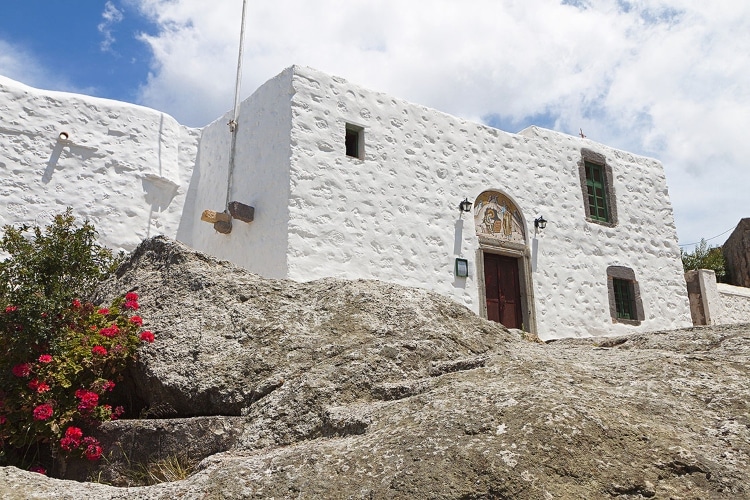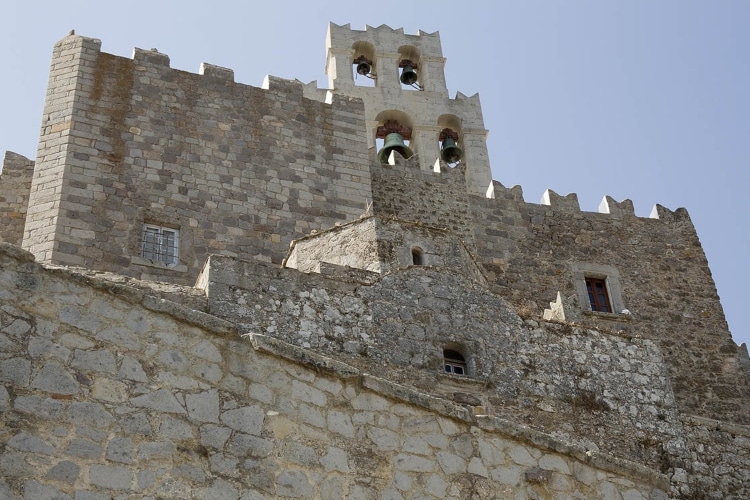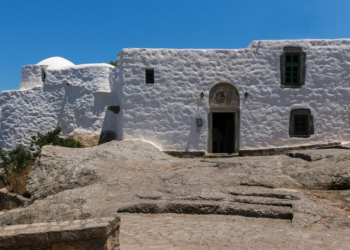Patmos has inextricably linked its name with one of the most famous caves in the world that exist on the island. The Cave of revelation. There, the “Revelation” was written by Saint John the Theologian, a disciple of Jesus Christ and an evangelist, when he arrived in 95 A.D. in Patmos island, being exiled by the Roman Emperor Domitian.
A global symbol for Christianity
Located on the hill between Skala and Chora (the capital), the Holy Cave of Revelation is one of the reference points not only of Patmos but also of the whole of Christianity worldwide. As John himself testifies, he does not arrive in Patmos as defeated and exiled or as a political prisoner during hard times. He arrives as an exile “on a spiritual mission”, continuing to transmit the Word and the Substance of God.
According to Christian tradition, during John’s stay in the cave, the rock was torn, in three smaller fissures. These symbolize the Holy Trinity. Then, there was the voice of God, who dictated to John the Holy Book of Revelation. The writing of the 4th Gospel according to John may have taken place in this same location.
It is a place that, once visited, bestows a unique devoutness and tranquillity. Nowadays, the Sacred Cave of the Revelation has been transformed into a worship area, where the pilgrim is given the opportunity to see where the Apocalypse was written. And touch the triple fissure in the rock. To see for himself where the Evangelist was resting. To touch the pits on the rock from which he helped himself get up. Also created at a height of human stature is the lectern of Prohoros.
The Cave is surrounded by the Monastery of the Revelation with courtyards full of flowers, cells and chapels.

The Holy Monastery, Unesco World Heritage Site
It is worth noting that the Holy Monastery of St. John the Theologian was founded in 1088 in Patmos, while in 1999 it was declared a World Heritage Site by UNESCO.

The library of the Monastery is a real masterpiece as it is one of the few monastery libraries that reached our time without their contents being completely destroyed. It is one of the few libraries that although it was formed in the 11th century, after the Schism, it nevertheless contains material from the period before the Schism. It consists mainly of Greek manuscripts. The main groups of manuscripts are related to the texts of the Bible. Characteristic is that Kontakaria with hymns of Romanos Melodos are rescued.





